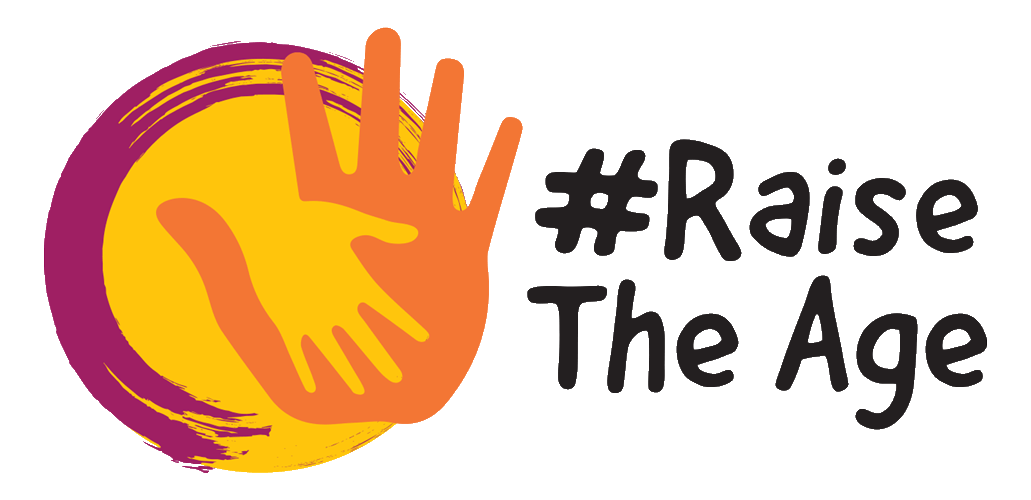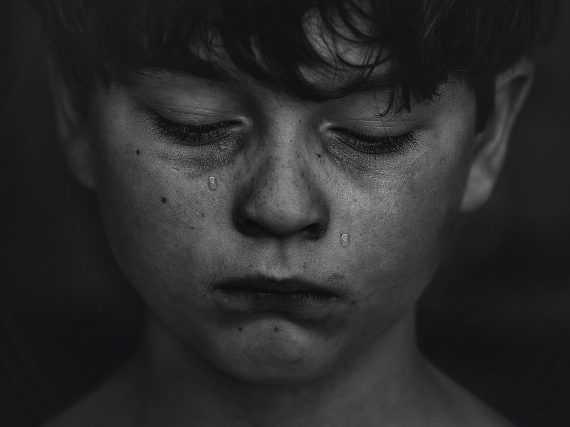Australia going backwards, not forwards, on raising the age of criminal responsibility
This week, the Centre for Innovative Justice joins 75 other organisations to call for action by all Australian states and territories to raise the age of criminal responsibility.
Despite extensive evidence pointing to the need for therapeutic, developmentally-appropriate responses to young people’s behaviour, children as young as ten can still be imprisoned across Australia.
Raising the age of criminal responsibility has long been identified as an area of urgent reform for the physical and psychological health of the nearly 600 children aged 10, 11, 12 and 13 who are locked up in prison each year in Australia, as well as the thousands of children who find themselves in contact with the justice system in other ways.
While custodial experiences do serious and lasting harm to children, evidence suggests that other aspects such as being arrested; appearing before a court; or being placed on a community supervision order can also be stigmatising, harmful, and make it more likely that a young person will continue to cycle through the justice system over their lifetime.[1]
Evidence also tells us that, overwhelmingly, children in contact with the criminal justice system have already experienced profound adversity, trauma and disadvantage – children who the system has failed, and who are then treated as offenders, rather than victims.[2] Children and young people with disability are also over-represented across all levels of the criminal justice system,[3] as are Aboriginal and Torres Strait Islander children, who are less likely to be cautioned; receive limited access to diversionary options; and are more likely to be processed through the courts than non-Aboriginal young people.[4]
As far back as November 2018, Australia’s former Council of Attorneys-General (CAG) established a working group to examine this critical issue. Two and a half years on, children as young as ten can still be – and are – imprisoned across Australia, despite an unreleased report by the CAG Working Group that reportedly recommended raising the age of criminal responsibility to the internationally accepted standard of 14 (you can read our previous submission to the Working Group’s Review of Age of Criminal Responsibility here)
Recent reforms in Queensland and the Northern Territory a step in the wrong direction
Instead of action to bring Australia in line with international human rights standards, and the body of evidence that supports a more therapeutic and developmentally-appropriate response to young people’s behaviour, 2021 has seen a worrying shift by the Queensland and Northern Territory governments towards Youth Justice legislative and policy reform that will see more children pushed into prolonged contact with the justice system.
Last month, in response to tragic incidents involving a small number of young people who were on bail at the time, the Queensland Parliament passed a suite of Youth Justice reforms which will make it harder for any child or young person to be granted bail, including by:
- creating a presumption against bail for particular offences committed while a child is on bail for an indictable offence;
- amending the Charter of Youth Justice Principles to include a greater focus on community safety;
- enabling police and courts to consider the willingness of a parent, guardian or other responsible person to support a young person on bail, as well as to notify Youth Justice or police of any breaches of bail by the young person, when making decisions about whether or not bail should be granted.
The reforms also established the ability, in certain circumstances, to require a young person (aged 16 and over) to wear a GPS tracking device as a condition of bail.
While the reforms are reportedly aimed at a small number of recidivist offenders, experts believe that the impacts will be broad – particularly the presumption against bail, which will require a young person to demonstrate why their detention in custody is not justified (“show cause”), rather than the onus being on the system to show that releasing the child into the community until their matter is heard would represent an unacceptable risk.
This change is at odds with the Atkinson Report’s recommendation to progressively reduce the proportion of children on remand in Queensland (that is, young people who have been refused bail but have not been found guilty of a crime or sentenced).
In 2016-17, young people on remand represented around 86 percent of Queensland’s youth detention population, significantly higher than the national average of 61 percent.[5] Notably, of the children remanded in custody during that period who ultimately received a custodial sentence, 41 percent were released without further time to serve. Of those, 26 percent were not subjected to any further supervision on the basis that the time they had spent on remand was equal to, or potentially in excess of, the time they would have served on a detention or community-based order. For the period 2019-2020, just one percent of admissions to youth detention centres in Queensland involved young people who had been sentenced by a judge.[6]
Last week, the Northern Territory followed suit, reversing changes which it had previously made in response to its own Royal Commission into the Detention and Protection of Children in the Northern Territory, which found that youth detention centres were “not fit for accommodating, let alone rehabilitating, children and young people”.
The new legislation removes the presumption of bail for specific offences and for young people who breach bail, as well as providing for the automatic revocation of bail for “serious” breaches – although this includes not just re-offending, but also relatively minor breaches such as failing to make curfew.
The reforms also curtail the discretion of the court, taking decision-making power away from specialist Children’s Court judges with an understanding of child development and how it can be impacted by trauma.
Under the new legislation, courts will be prevented from referring a young person back to police for diversion where police have already made an assessment and determined the young person as unsuitable for diversion. Courts will also no longer be able to dismiss a charge where a young person has attempted but does not successfully complete a diversion program or Youth Justice Conference – a process which may not be completed for a range of reasons beyond the young person’s control, including the readiness of the young person or their broader family to engage in a restorative process. This may be particularly likely where a family has experienced complex or intergenerational trauma.
As in Queensland, these reforms will drive up the overall rate of young people in youth detention but will disproportionately impact Aboriginal and Torres Strait Islander young people – who represent more than 90 percent of Territory children and young people in detention so far this year.[7]
Where to from here?
As Victoria’s Commissioner for Children and Young People, Liana Buchanan, emphasised in the CIJ’s webinar on raising the age of criminal responsibility, it is crucial that we stop seeing children’s offending behaviours as a criminal justice issue, and start to understand and respond to it as a wellbeing and support issue.
The Commissioner’s view is backed by a significant body of evidence – much of which is outlined in the 48 submissions to the CAG Review of Age of Criminal Responsibility which were released this week – which makes clear that what is actually needed are wraparound, therapeutic responses that can address the underlying drivers of children and young people’s behaviour, rather than compounding experiences of harm, trauma and disadvantage.
Mental health and disability services; specialist trauma services; support to facilitate engagement in education and employment; and services that have the capacity to work with the whole family around positive parenting and relationships, may all play a role. While these services exist across all states and territories in Australia, more investment and policy attention is needed to ensure that they can respond effectively to the needs of children and families whose needs are often multiple and complex.
Investment in new place-based and community-led responses will also be crucial, with strong examples such as the Maranguka Justice Reinvestment Project in Bourke NSW – a community-led project which takes a collective impact approach to addressing justice involvement through a range of cross-sector initiatives that have been developed in collaboration with the Bourke community and local service providers. Other evidence-based models, such as Aboriginal Family Led Decision Making, further demonstrate how designing and implementing service responses in ways that are consistent with the principle of self-determination can empower children and families to thrive.
Despite a range of programs and initiatives across Australia that could form the basis of an alternative response, only the ACT has so far begun work to change its laws and prevent children as young as ten from being caught up in the justice system. In the absence of a nationally consistent approach, it’s time for Victoria – which has a proud history of leading national reform on important issues – to take unilateral steps to raise the age of criminal responsibility, and to demonstrate the outcomes that are possible for children, families and the broader community when we stop criminalising vulnerable children and instead invest in evidence-based and developmentally-appropriate services and supports.
—–
[1] See, e.g. Whyte, B., Youth Justice in Practice (2009), Policy Press, London; Muncie, J. ‘The Theory and Politics of Criminalisation’ (2008), Criminal Justice Matters 74(1); Pearson, G., ‘Youth, crime and society’ (1994) in Maguire M., Morgan R. and Reiner R. (Eds), The Oxford Handbook of Criminology, Clarendon, Oxford; 8 Smith, R., ‘Doing Justice to Young People: Youth Crime and Social Justice (2011), Willan Publishing, Cullompton.
[2] See, e.g. Commission for Children and Young People, Victoria State Government, The same four walls: Inquiry into the use of isolation, separation and lockdowns in the Victorian youth justice system (2017); Sentencing Advisory Council, ‘Crossover Kids’: Vulnerable Children in the Youth Justice (Report 3: Sentencing Children Who Have Experienced Trauma) (June 2020) 11; Kath McFarlane, ‘Care-Criminalisation: The Involvement of Children in Out-of-Home Care in the New South Wales Criminal Justice System’ Australian & New Zealand Journal of Criminology 51(3); Kate Fitz-Gibbon and Wendy O’Brien, ‘A Child’s Capacity to Commit Crime: Examining the Operation of Doli Incapax in Victoria (Australia)’ (2019) International Journal for Crime, Justice and Social Democracy 8(1); Carla Muerk et al, The Kirby Institute, Changing direction: mental health needs of justice-involved young people in Australia (2020).
[3] See, e.g. Justice Health and Forensic Mental Health Network and Juvenile Justice NSW, 2015 Young People in Custody Health Survey: Full Report (2017); Ellem, K. and Richards, K. ‘Police contact with young people with cognitive disabilities: Perceptions of procedural (in)justice.’ (2018), Youth Justice: An International Journal; ACT Children and Young People Commissioner, Children and young people with complex needs in the ACT youth justice system (2016); Carol Bower et al, ‘Fetal alcohol spectrum disorder and youth justice: a prevalence study among young people sentenced to detention in Western Australia’ (2018), BMJ Open 8(2).
[4] See, e.g. Australian Law Reform Commission, Pathways to Justice – Inquiry into the Incarceration Rate of Aboriginal and Torres Strait Islander Peoples, ALRC Report 133 (2017); Law Council of Australia, Aboriginal and Torres Strait Islander Peoples, Justice Project Final Report (2018).
[5] Australian Institute of Health and Welfare, 2018: Youth Justice in Australia 2016–17 cited in Queensland Government, Working Together, Changing the Story: Youth Justice Strategy 2019-2023.
[6] Queensland Government Statistician’s Office, Justice report, Queensland, 2019-20: Criminal justice statistics (2021) 84.
[7] Analysis of Territory Families, Housing and Communities Youth detention census data.

